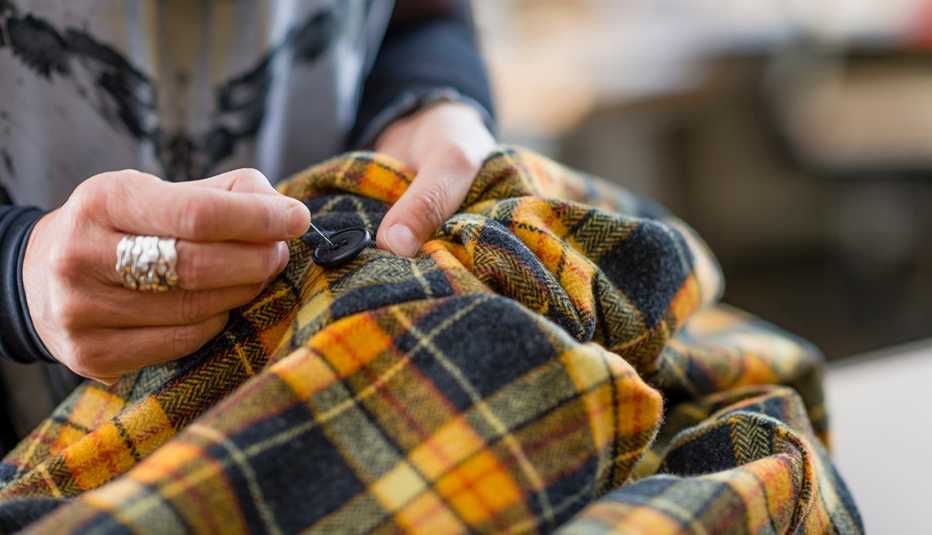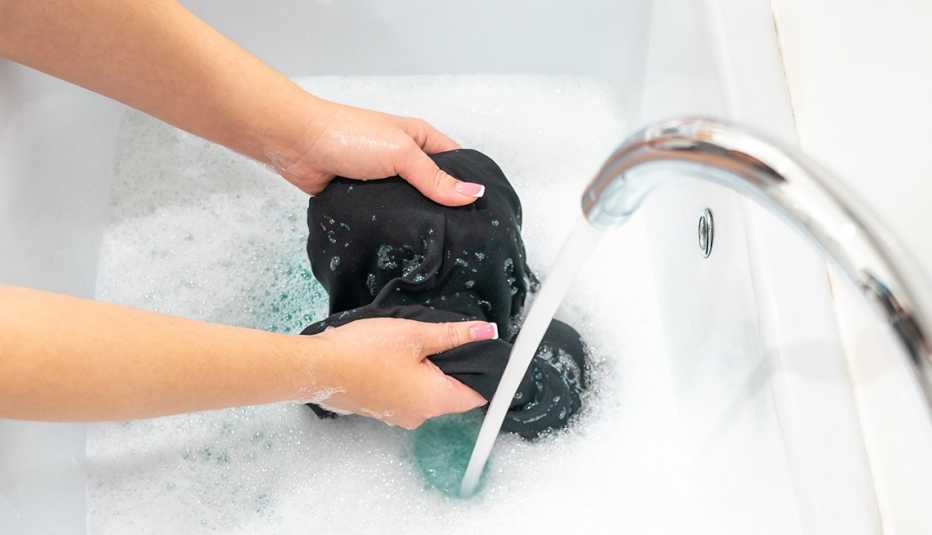AARP Hearing Center
Since we're hunkering down at home for who knows how long, why not use this time for some wardrobe rehab? Everyone feels a bit stressed, but instead of binge-buying online let's keep our credit cards clear of extra expenses whenever possible. Even if you haven't picked up a needle and thread since eighth grade Home Ec class, these easy DIY tricks will perk up your same old clothes and shoes for a fresh start.
1. Prioritize what to do
Start with warm weather clothes and accessories for now and leave restoring winter items, boots, pumps and dressy shoes and serious tailored work clothes for the future. Divide repairs into piles: rips and holes, hems and buttons, laundry and stains, shoes and costume jewelry. Don't attempt to do everything at once or cherry-pick as you go. Focus on one specific task a day. Then feel good when you accomplish it.
2. Be OK with good enough
You are not Coco Chanel. Heck, you are not even Martha Stewart (or a shoe-repair guy, a dry cleaner or a fashion stylist). Unless you have your own sewing machine and are a whiz at doing this sort of thing, lower your standards. Know that double-faced tape or duct tape works remarkably well if you don't have the patience or stuff for a quick stitch-up of dangly hems. It's also fine to swap in other household essentials for real supplies in this pinch.
3. Stitch up with confidence
If you can thread a needle — and have one — you're good to go, just be sure to turn whatever you're working on inside out before you start, double up the thread and knot the end. Know a basic backstitch is sturdier than a running stitch. (This means your needle goes into the fabric and behind the first stitch to reinforce it.) A simple whipstitch — your needle goes over and around to close two edges in overhand loops — is best on seams, holes and tears. If you don't have a kit of thread colors handy (even my own stash of hotel room sewing kits has vanished!) keep it simple and use black thread for darks and brights, white for white and light.


































































